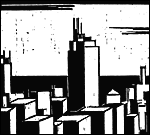Susan Sontag, On Photography (Farrar, Straus and Giroux, 1977) Reissued by Picador in paperback in 2001 Almost three decades before MTV flooded the world with machine-gun paced image montages or digital cameras overloaded the Internet with a bottomless supply of porn, Susan Sontag delivered the definitive meditation On Photography. In her first 10 pages, Sontag dispenses with thousands of clichés that we use to describe modern life using photographic metaphors: "Today everything exists to end up in a photograph." In a deft sentence, she hypothesizes that our media shape reality more than the people controlling the media tools. Her work survived almost 30 years of technological and critical-theory shifts, mainly because she can twist a simple idea upside-down and dismantle common, dangerous assumptions about culture. She's famous for her clinical, detached prose, but her style highlights a devastating intellectual attack. This book is not a history or catalog of the development of photography. Sontag makes strategic jumps between periods to unwrap generalizations about the medium. She begins with the democratic myth of photography, how photos are valued as truth and how cameras allowed anyone to freely participate in an art form. Sontag shows how the lens is always pointed with an agenda — from middle-class tourists bumbling through poor, scenic countries to the U.S. government celebrating over the corpse of Che Guevara in a propaganda news photo. In a reconsideration of photographer Diane Arbus, Sontag explores another kind of agenda. Arbus' famous images of a leering little boy with a toy grenade or a giant towering beside his bewildered parents changed the art's trajectory-- sending privilaged middle-class artists to search out the exotic other in seedy corners of America. Sontag takes a rigorous look at this aesthetic of strangeness. (For those interested in Diane Arbus in a more contemporary context, The New York Times Magazine ran a cover story about the artist. Check out "Arbus Reconsidered," from the September 14, 2003 edition of the magazine.) Throughout the book, Sontag tangles with misconceptions and always ends with a knockout punch, like her memories of seeing Dachau death-camp pictures as a little girl: "something went dead; something is still crying." Under her pen, harmless pictures become dangerous cultural objects, an emotional cancer corroding inside America. Photography opens doors to dark, unclassifiable impulses in human beings — in pictures of war, starving children, or circus freaks — and Sontag leaves those wounds bloody and exposed with her scalpel prose. In the end, photography drops away and society becomes her true subject: "[Today] the freedom to consume a plurality of images and goods is equated with freedom itself." Her point will echo for another century. Now, with all our news television, magazines, and scrapbook photos, we often ignore the ways that reality is filtered by the media or fail to examine our context as viewers living in a privilaged country. We are easily manipulated by images in a country that celebrates free access to media. For that reason alone, journalists should read this book and think hard every time they represent another human being in print. Anyone writing about photography must grapple with this book as well, because Sontag's shadow looms over this scholarship. Most importantly, this book offers a priceless structure for critical essays, a devastating logic that can unravel over-generalized or stereotyped subjects. That surgical tool-kit for writers may be her greatest legacy. Almost 30 years later, Sontag revisited these ideas in Regarding the Pain of Others. Exploring a more media-saturated culture, she re-thinks ideas about war photos and images of suffering. Her analysis extends her critique of the privilaged photographers and viewers that weaving throughout On Photography. For a shorter look at these ideas, her "Looking at War: Photography's View of Devastation and Death," in the December 9, 2002 issue of The New Yorker, is illuminating. MORE: Sontag’s book began with a series of essays for the New York Review of Books, and the publication has a generous selection those developing essays. During the media-aftermath of September 11th, Sontag was attacked as a “traitor” by many pundits. The debate began with her angry criticism of the Bush administration’s bombing attacks (scroll down) |
 |
|||||||||||||||||||||||||||